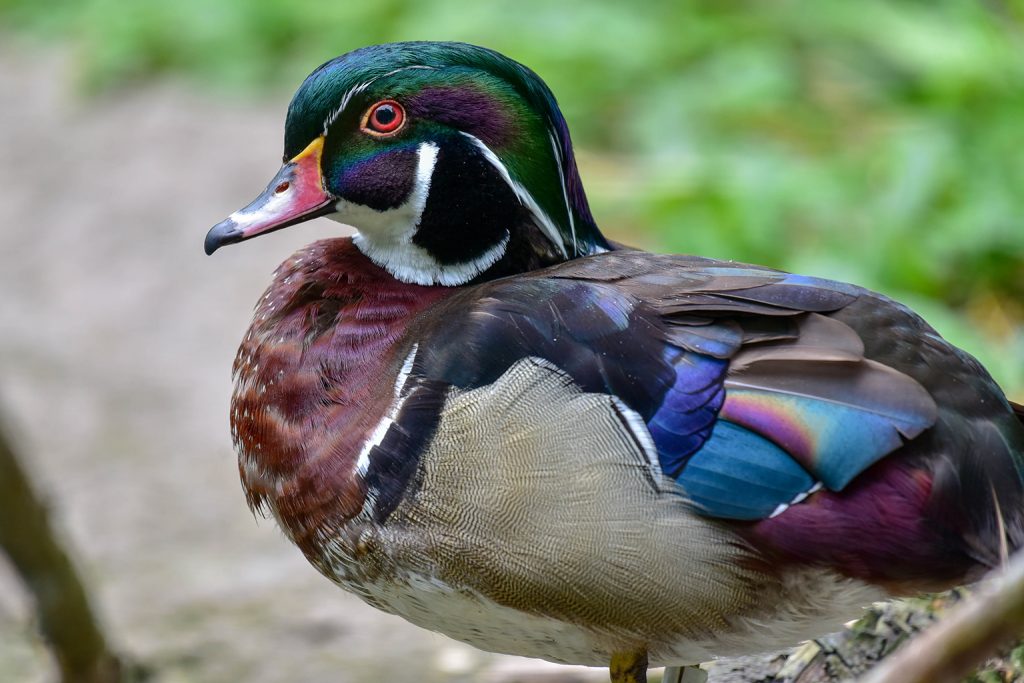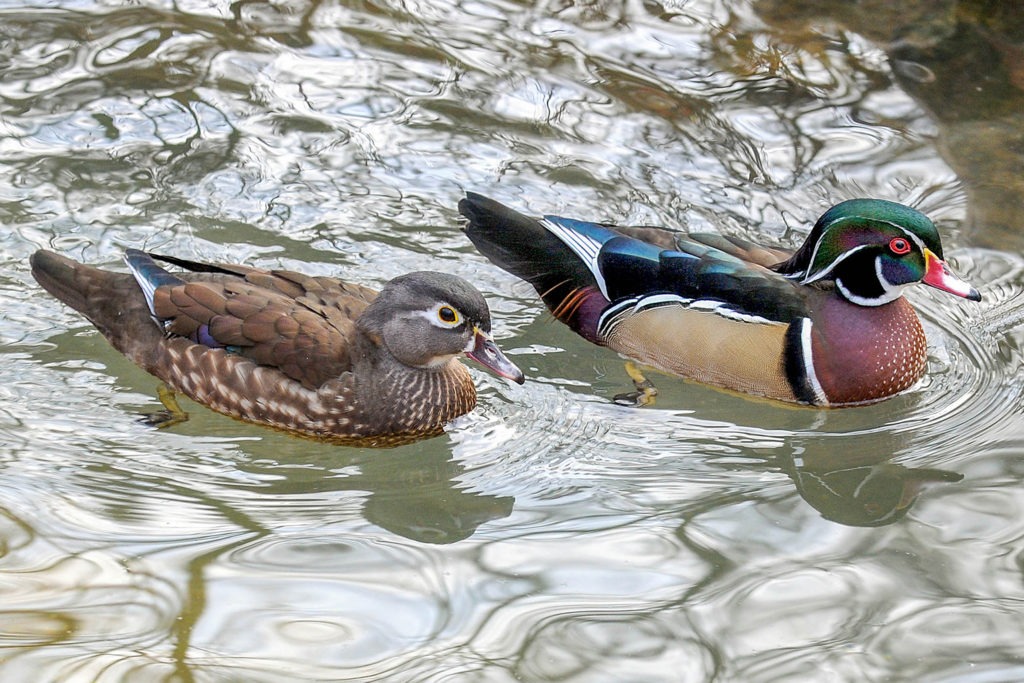Overview
“Where I live”
During the summer breeding season, wood ducks inhabit the entire eastern half of the United States, north into Canada, and the far west from California north into British Columbia. In winter, wood ducks migrate to the Pacific coast or Gulf coast and southern Atlantic coast, and stay almost exclusively within the boundaries of the United States.
“How I live there”
Wood ducks are dabbling ducks that prefer forested wetlands, including along rivers, swamps, marshes, lakes, and ponds. They feed on seeds, fruits, acorns, and aquatic and terrestrial invertebrates. Requirements for breeding habitat are many, including the presence of large trees with appropriately-sized cavities, adequate food sources, adequate cover, available water, and suitable brood-rearing locations.
During the day, wood ducks are usually found only in small flocks. However, they tend to form large roosts at night, particularly during migration and on their wintering grounds. Wood duck roosts can contain several hundred birds.
“Making my mark”
The wood duck is one of only a few North American ducks that nests in tree cavities.
Natural tree cavities can be scarce, and if provided with nesting boxes, wood ducks will also use those.
“What eats me”
Many animals prey on wood duck eggs; the raccoon is one of the most significant. Various snakes in the South, and occasionally fox squirrels, minks, opossums, or rats may also prey on eggs. Many animals also prey on wood ducklings, including minks, turtles, fish, snakes, bullfrogs, predatory birds, and other predatory mammals.
Adult wood ducks are widely hunted, and are second only to mallards in the number shot in the U.S. each year.
Raising Young
Wood ducks pair up early each year and usually arrive on their breeding grounds already paired. Pairs don’t defend a particular territory, but males will defend their females. Females nest in tree cavities, and must compete with many other animals for control of these cavities. Competitors include starlings, squirrels, bees, hornets, hooded mergansers, screech owls, and sparrow hawks. Female wood ducks line their nests with feathers from their own breasts. They probably lay clutches of 10-15 eggs on average, although it is difficult to estimate true clutch sizes because often enough several females will lay their eggs in a single “dump” nest. After hatching, ducklings jump down from their nesting site (which may be more than 250 feet up!) and make their way straight to water. Their mothers encourage them by calling to them, but don’t help in any other way. After about two weeks, mothers lead their broods away from nesting sites into new habitat. They will care for their ducklings for six to eight weeks, at which point they will wander away to molt. Ducklings fledge at about eight weeks of age.
Conservation
Wood ducks are listed as a species of least concern by the IUCN, the world’s leading conservation organization. Wood duck populations declined precipitously in the 19th century but recovered in the 20th and are now regarded as stable and possibly increasing in some places.
Taxonomy
- Kingdom: Animalia
- Phylum: Chordata
- Subphylum: Vertebrata
- Class: Aves
- Order: Anseriformes
- Family: Anatidae
- Genera: Aix
- Species: sponsa



